Siem Reap is more than just a city. It is a living museum of Cambodia’s glorious past and a vibrant showcase of its modern culture. As the home of the world-famous Angkor Wat, Siem Reap attracts millions of visitors every year who want to witness the majestic temples and monuments of the ancient Khmer civilization. But Siem Reap also has many other hidden treasures that await the curious traveler, such as floating villages, cultural villages, natural parks, and local markets. Siem Reap is a place where you can experience the best of both worlds: the ancient and the contemporary, the sacred and the secular, the exotic and the familiar.
Siem Reap is a place that will surprise you, delight you, and inspire you.
Top Tourist Attractions in Siem Reap
Whether you want to explore the ancient wonders of Angkor Wat, experience the local culture and cuisine, enjoy the natural beauty and wildlife, or have some fun and adventure, Siem Reap has it all. Siem Reap is also a great base to discover other parts of Cambodia, such as the floating villages, the national parks, and the historical sites. Siem Reap is a city that will make you fall in love with Cambodia and its people. Plan your trip to Siem Reap and find out why it is one of the best places to visit in Cambodia.
Here are top 10 attractions in Siem Reap:
Angkor Wat: A Majestic Marvel
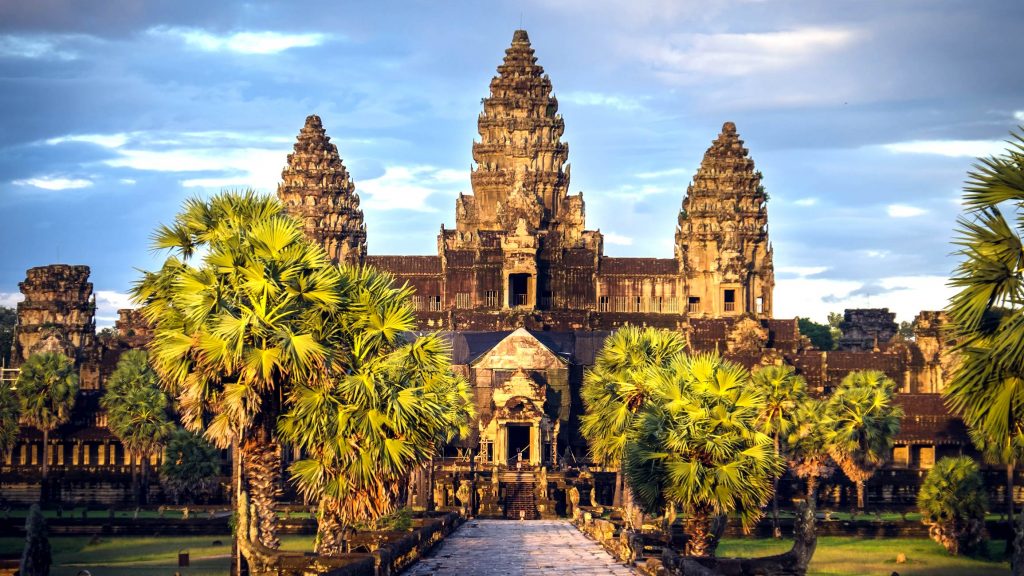
Angkor Wat is a UNESCO World Heritage Site and the largest religious monument in the world. Built in the 12th century by King Suryavarman II, this temple complex in Cambodia showcases the architectural brilliance and artistic genius of the Khmer civilization. Angkor Wat features five lotus-shaped towers that symbolize Mount Meru, the mythical home of the gods in Hindu and Buddhist cosmology.
The temple is surrounded by a massive moat and adorned with intricate bas-reliefs depicting mythological scenes. Angkor Wat is a marvel of ancient engineering, culture, and spirituality that attracts millions of visitors every year. Discover the mystical marvel of Angkor Wat and explore its rich history and stunning landscapes
Angkor Thom: Ancient Grandeur
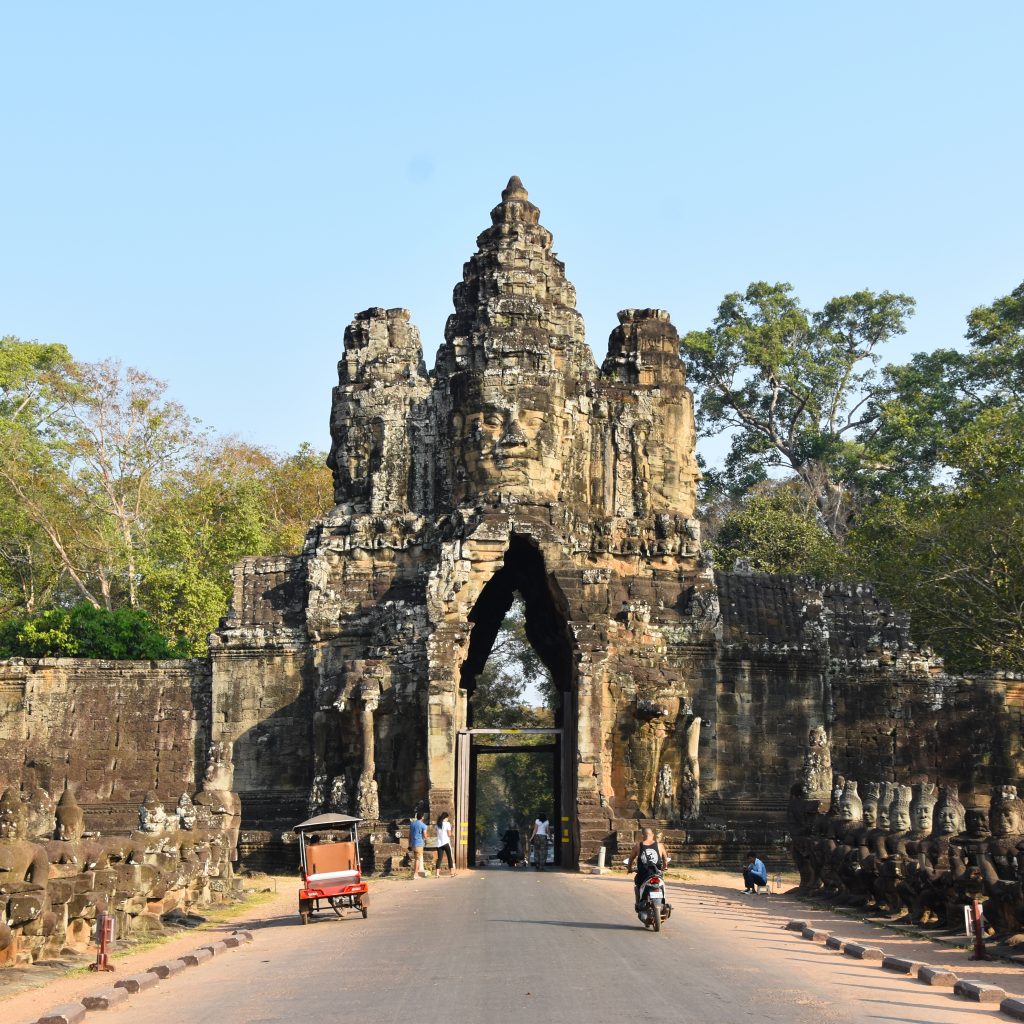
Angkor Thom, meaning “Great City” in Khmer, was the last and most enduring capital city of the Khmer Empire. It was built in the late 12th century by King Jayavarman VII, who transformed Angkor into a Buddhist city and a center of culture and religion. Angkor Thom covers an area of 9 km² and contains many monuments from earlier eras as well as those established by Jayavarman and his successors.
The most famous of these is the Bayon, a temple with 54 towers adorned with serene, smiling faces of Avalokiteshvara, the bodhisattva of compassion. Angkor Thom also features the Terrace of the Elephants, the Terrace of the Leper King, the Baphuon, and the Phimeanakas, among other impressive structures. Angkor Thom is a masterpiece of urban planning, engineering, and artistry that showcases the glory and sophistication of the ancient Khmer civilization.
Discover the mystical marvel of Angkor Thom and explore its rich history and stunning landscapes.
Bayon Temple: Faces of Stone
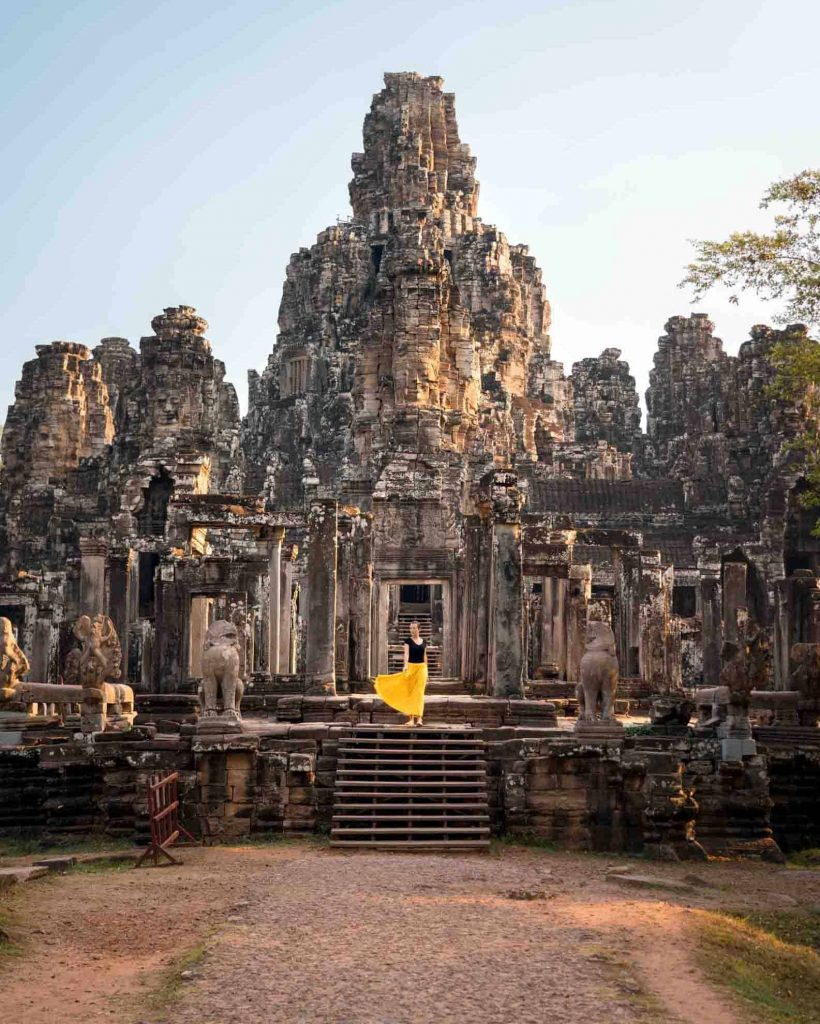
Bayon Temple is a magnificent ancient Khmer temple located at the heart of Angkor Thom, the royal city of King Jayavarman VII. It is one of the most popular attractions in Siem Reap, Cambodia, and a UNESCO World Heritage Site.
Bayon Temple is famous for its distinctive feature of 54 towers decorated with more than 200 serene and smiling stone faces, believed to represent the king himself or the bodhisattva of compassion, Avalokiteshvara. Bayon Temple is also remarkable for its intricate bas-reliefs that depict scenes of historical, mythological, and everyday life in the 12th century.
Bayon Temple is a masterpiece of religious and artistic expression that reflects the glory and diversity of the Khmer civilization. Experience the wonder of Bayon Temple and immerse yourself in its rich history and culture.
Ta Prohm: Nature’s Embrace
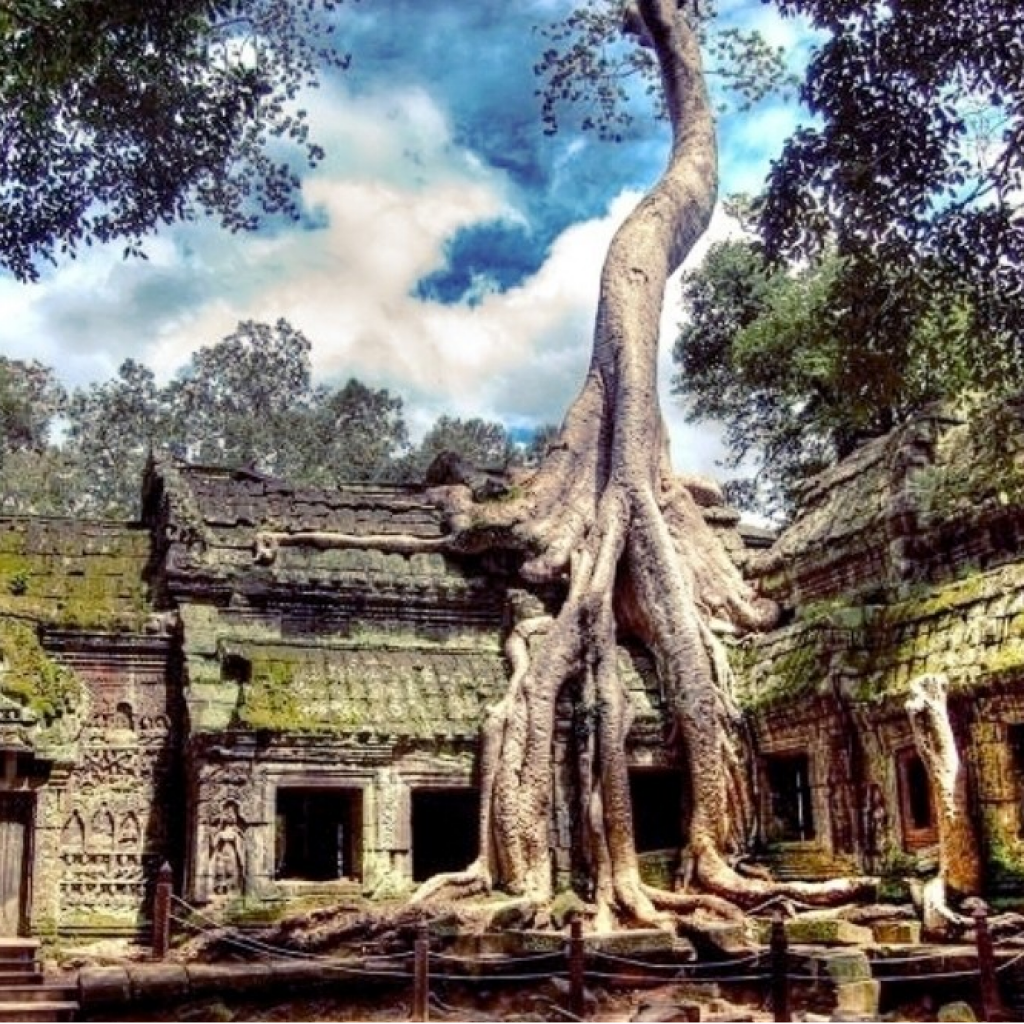
Ta Prohm is a stunning ancient temple located in the Angkor archaeological park in Siem Reap, Cambodia. It was built in the 12th century by King Jayavarman VII as a Mahayana Buddhist monastery and university dedicated to his mother. Unlike most of the other temples in Angkor, Ta Prohm has been left largely in the same condition as it was found, with massive tree roots and vines growing over the crumbling stones and creating a surreal atmosphere.
Ta Prohm is also known as the “jungle temple” or the “Tomb Raider temple” because of its appearance in the movie Lara Croft: Tomb Raider starring Angelina Jolie. Ta Prohm is a UNESCO World Heritage Site and one of the most visited and photographed temples in Angkor. Witness the beauty and mystery of Ta Prohm and marvel at its unique architecture and nature.
Angkor National Museum: Unveiling History
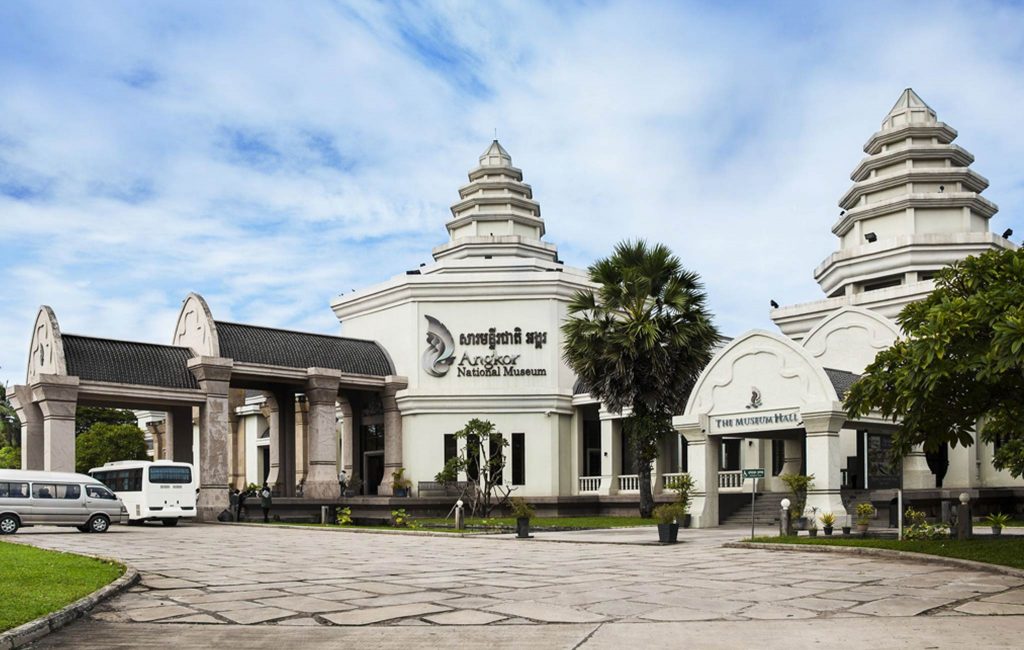
Angkor National Museum is a must-see attraction for anyone interested in the history and culture of the Khmer Empire and its magnificent Angkor temples. Located in Siem Reap, the museum showcases more than 1,000 artifacts from the 9th to the 14th centuries, ranging from statues and sculptures to jewelry and ceramics. The museum features eight galleries that explore the themes of Khmer civilization, religion, beliefs, kings, architecture, and art.
Visitors can enjoy interactive exhibits, audio guides, and multimedia presentations that bring the ancient Khmer world to life. The museum is open daily from 8:30 am to 6:30 pm, and the entrance fee is $12 for adults and $6 for children. For more information, visit the official website or call (855) 63 966 601 / (855) 97 9633 601.
Banteay Srei: The Pink Gem
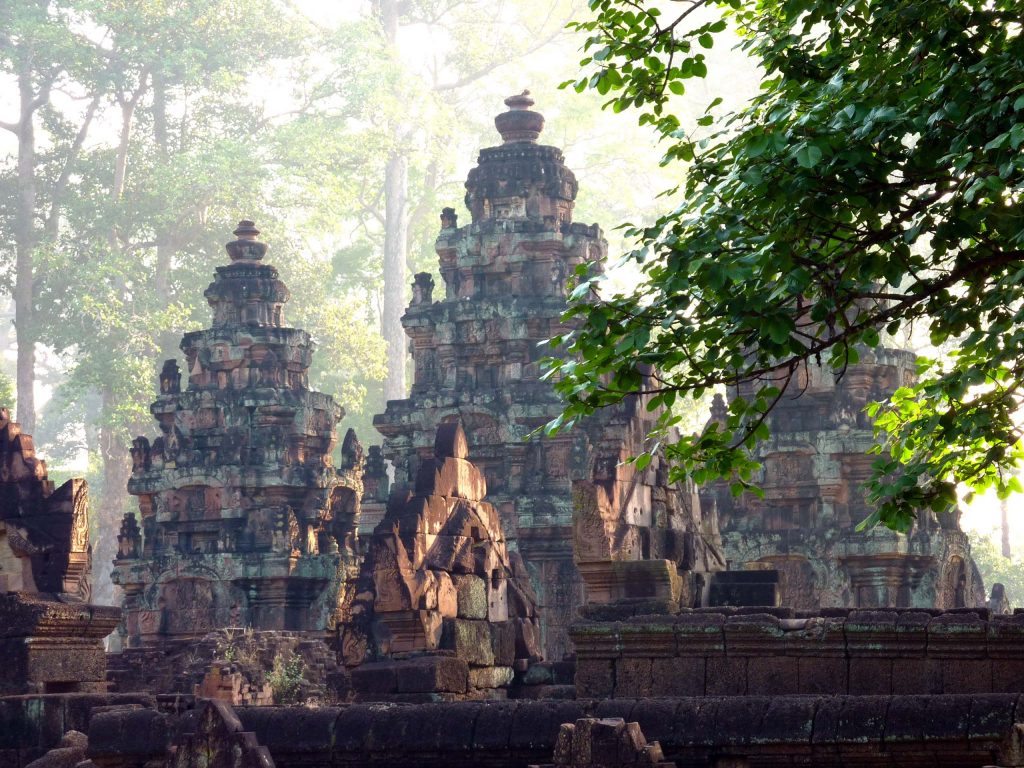
Ta Prohm is a stunning ancient temple located in the Angkor archaeological park in Siem Reap, Cambodia. It was built in the 12th century by King Jayavarman VII as a Mahayana Buddhist monastery and university dedicated to his mother. Unlike most of the other temples in Angkor, Ta Prohm has been left largely in the same condition as it was found, with massive tree roots and vines growing over the crumbling stones and creating a surreal atmosphere.
Ta Prohm is also known as the “jungle temple” or the “Tomb Raider temple” because of its appearance in the movie Lara Croft: Tomb Raider starring Angelina Jolie. Ta Prohm is a UNESCO World Heritage Site and one of the most visited and photographed temples in Angkor. Witness the beauty and mystery of Ta Prohm and marvel at its unique architecture and nature.
Phnom Kulen National Park: Natural Sanctuary
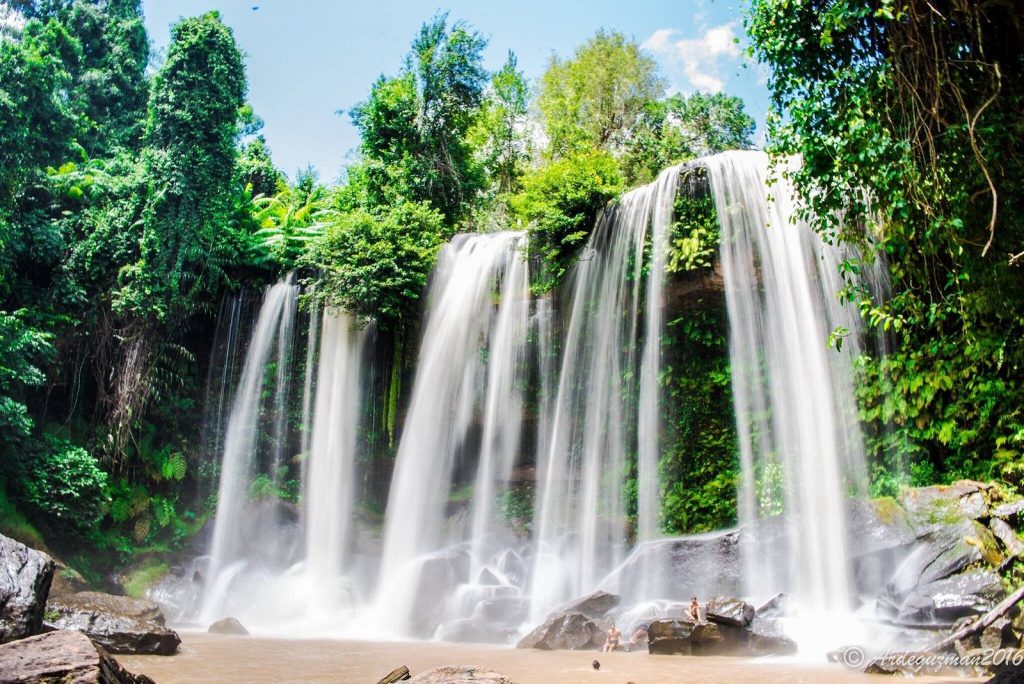
Phnom Kulen National Park is a natural and cultural treasure in Cambodia, located in the Phnom Kulen mountain range in Siem Reap Province. It was established in 1993 and covers an area of 373.76 km2 (144.31 sq mi). Its official name is Jayavarman-Norodom Phnom Kulen National Park, named after the two kings who played important roles in the history of the park. Phnom Kulen National Park is a UNESCO World Heritage Site and a sacred place for the Khmer people.
Phnom Kulen National Park offers visitors a variety of attractions, such as stunning waterfalls, ancient temples, historical monuments, and natural wonders. The park is also home to many rare and endangered species of flora and fauna, as well as medicinal plants with allelopathic potentials. Some of the highlights of the park include:
- Kbal Spean, also known as the “Valley of a Thousand Lingas”, where the riverbed and banks are carved with hundreds of lingas, yonis, and other figures that represent the Hindu gods and goddesses. The carvings date back to the 11th and 12th centuries and are believed to bless the water that flows to the Angkor area.
- Preah Ang Thom, a temple that houses a giant reclining Buddha statue that is 8 meters (26 ft) tall and carved out of a sandstone boulder. The statue is one of the largest in Cambodia and is revered by the locals as a holy site. The temple also has a large collection of Buddha images and relics.
- Chup Preah, a valley that features several statues made during the 16th century, such as a large Buddha head, a four-faced Brahma, and a Vishnu riding on a Garuda. The statues are surrounded by lush vegetation and offer a serene atmosphere.
- Mahendraparvata, the ancient capital city of the Khmer Empire, founded by King Jayavarman II in 802 CE. This is where he declared himself as the universal ruler or the “god-king” and initiated the cult of Devaraja. The city was rediscovered in 2012 by using airborne laser scanning technology and revealed many hidden temples and structures.
Floating Villages: Waterfront Wonders
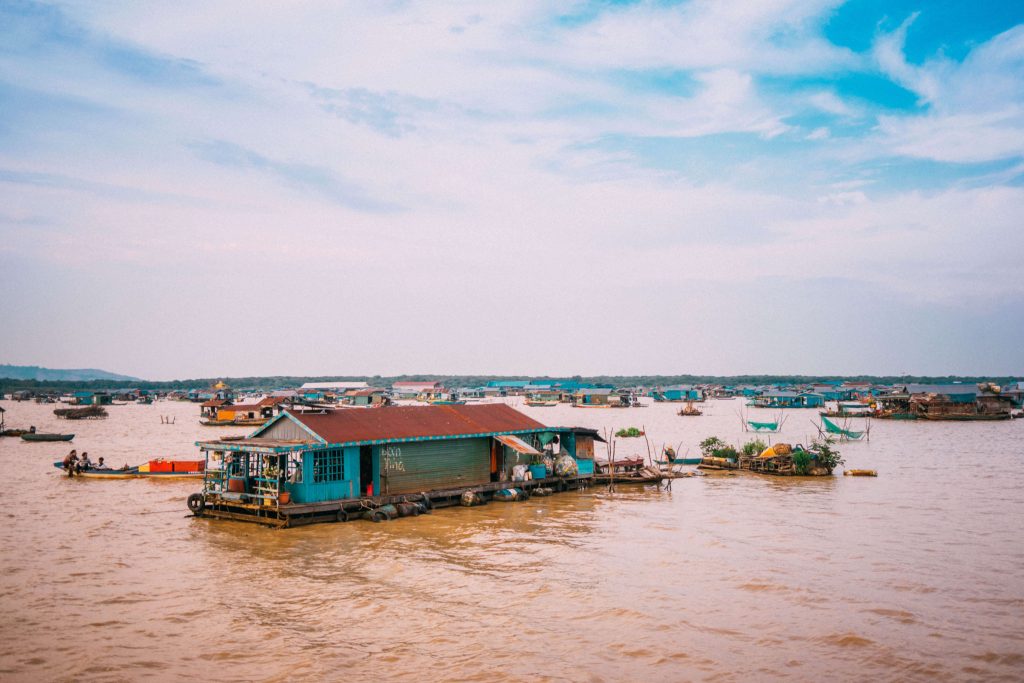
The Floating Villages in Siem Reap are unique settlements that exist on or near the Tonle Sap Lake, the largest freshwater lake in Southeast Asia. These villages are home to communities that have adapted to life on the water, relying on fishing and other water-related activities for their livelihoods.
The Siem Reap Floating Villages offer visitors a glimpse into the local culture and lifestyle, as well as the natural beauty and biodiversity of the lake. There are four main villages that are accessible from Siem Reap: Mechrey, Kampong Khleang, Kampong Phluk, and Chong Khneas. Each village has its own characteristics and attractions, as described below:
- Mechrey: This village is the entry point to the Prek Toal Core Bird Reserve, one of the most important bird sanctuaries in Southeast Asia. Here, you can see a variety of water birds, such as storks, pelicans, ibises, and herons, as well as the endangered spot-billed pelican. Mechrey is also a fishing village, where you can observe the daily activities of the locals, such as netting, drying, and selling fish. Mechrey is the newest of the floating villages to take on tourism, and it is considered more authentic and less touristy than the others.
- Kampong Khleang: This village is the most remote and the least visited by tourists, but it is also the largest and the most impressive. Kampong Khleang has both stilted and floating houses, as well as a floating market, a floating school, and a floating pagoda. The village is home to about 20,000 people, mostly Khmer, who live in harmony with the lake. Kampong Khleang is also known for its smoked fish, which is a delicacy in Cambodia.
- Kampong Phluk: This village is a combination of three villages, with mainly stilted houses that rise up to 10 meters above the water during the dry season. Kampong Phluk is surrounded by a flooded forest, where you can see mangrove trees and other aquatic plants. The village is also a fishing community, where you can learn about the traditional methods and tools used by the locals. Kampong Phluk is a good option if you want to see both the stilted and the floating villages, as well as the natural environment of the lake.
- Chong Khneas: This village is the closest and the most popular among tourists, but it is also the most commercialized and the least authentic. Chong Khneas has both stilted and floating houses, as well as many souvenir shops, restaurants, and bars. The village is also the boat terminal for Battambang and Phnom Penh, and it attracts many visitors who want to see the lake and the village in a short time. Chong Khneas is not recommended if you are looking for a genuine cultural experience, as it is often crowded and overpriced.
Cambodian Cultural Village: Living Heritage
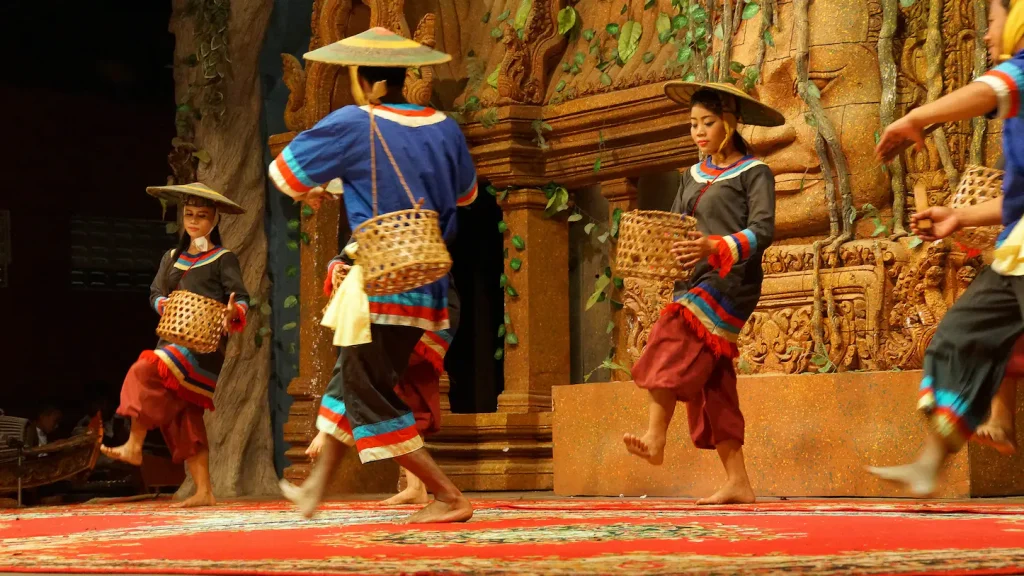
Cambodian Cultural Village, also known as Angkor Green Park, is a cultural village and open-air museum in Siem Reap, Cambodia. It is located on road no. 6, three kilometres (1.9 mi) from the airport, six kilometres (3.7 mi) from the town and five kilometres (3.1 mi) from the famous Angkor Wat temple complex.
Its official name is Jayavarman-Norodom Phnom Kulen National Park, named after the two kings who played important roles in the history of the park. Cambodian Cultural Village covers an area of 210,000 square meters and showcases the culture, traditions, and heritage of 19 different ethnic groups of Cambodia. The park consists of 11 artificially-made unique villages, each representing a different group, such as Cham, Chinese, Kreung, Khmer, and more. The park also features a wax museum, a miniature replica of Angkor Wat, and a souvenir shop.
The park offers visitors a variety of activities and attractions, such as dance shows, performances, games, workshops, and exhibitions. The park is open daily from 9:00 am to 9:00 pm and the entrance fee is $15 for foreigners and $5 for locals.
Siem Reap Art Center Night Market: Local Crafts
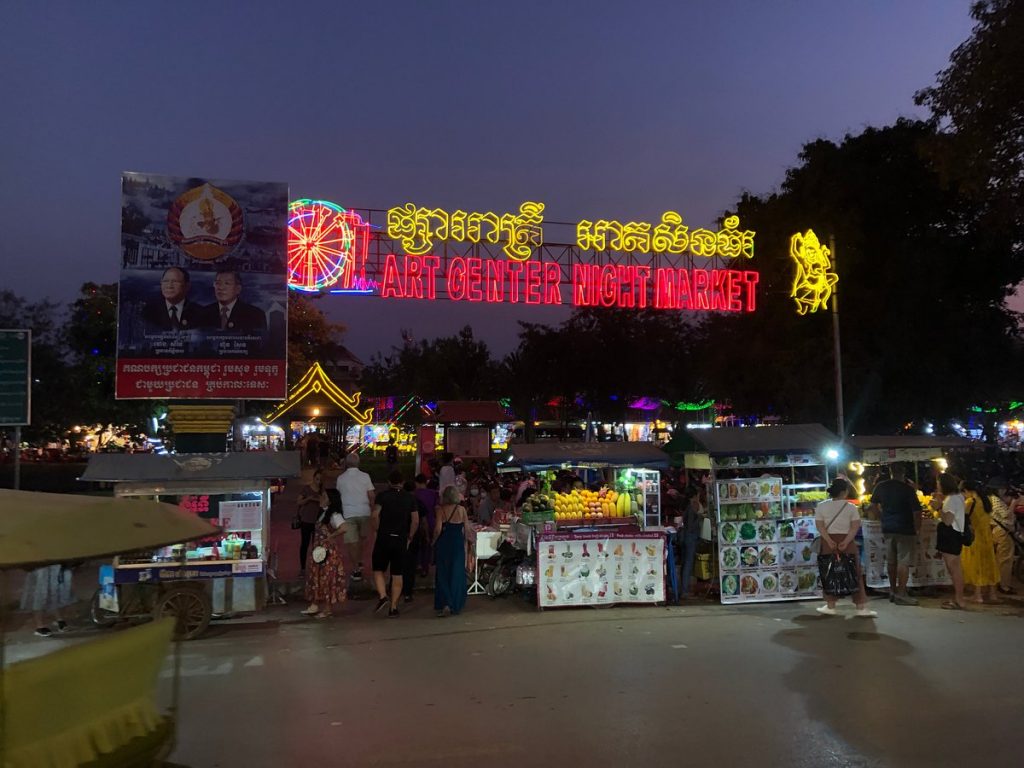
Cambodian Cultural Village, also known as Angkor Green Park, is a cultural village and open-air museum in Siem Reap, Cambodia. It is located on road no. 6, three kilometres (1.9 mi) from the airport, six kilometres (3.7 mi) from the town and five kilometres (3.1 mi) from the famous Angkor Wat temple complex. Its official name is Jayavarman-Norodom Phnom Kulen National Park, named after the two kings who played important roles in the history of the park.
Cambodian Cultural Village covers an area of 210,000 square meters and showcases the culture, traditions, and heritage of 19 different ethnic groups of Cambodia. The park consists of 11 artificially-made unique villages, each representing a different group, such as Cham, Chinese, Kreung, Khmer, and more.
The park also features a wax museum, a miniature replica of Angkor Wat, and a souvenir shop. The park offers visitors a variety of activities and attractions, such as dance shows, performances, games, workshops, and exhibitions. The park is open daily from 9:00 am to 9:00 pm and the entrance fee is $15 for foreigners and $5 for locals.
Conclusion
Siem Reap is a destination that offers something for everyone, from ancient temples and cultural villages to natural wonders and modern entertainment. Whether you are interested in history, culture, nature, or adventure, you will find plenty of attractions to suit your taste and budget.
Siem Reap is also a gateway to the rest of Cambodia, where you can explore more of its rich and diverse heritage. Siem Reap is a place that will captivate you with its charm and beauty, and leave you with unforgettable memories. Book your trip to Siem Reap and discover the best tourist attractions in this amazing city.
